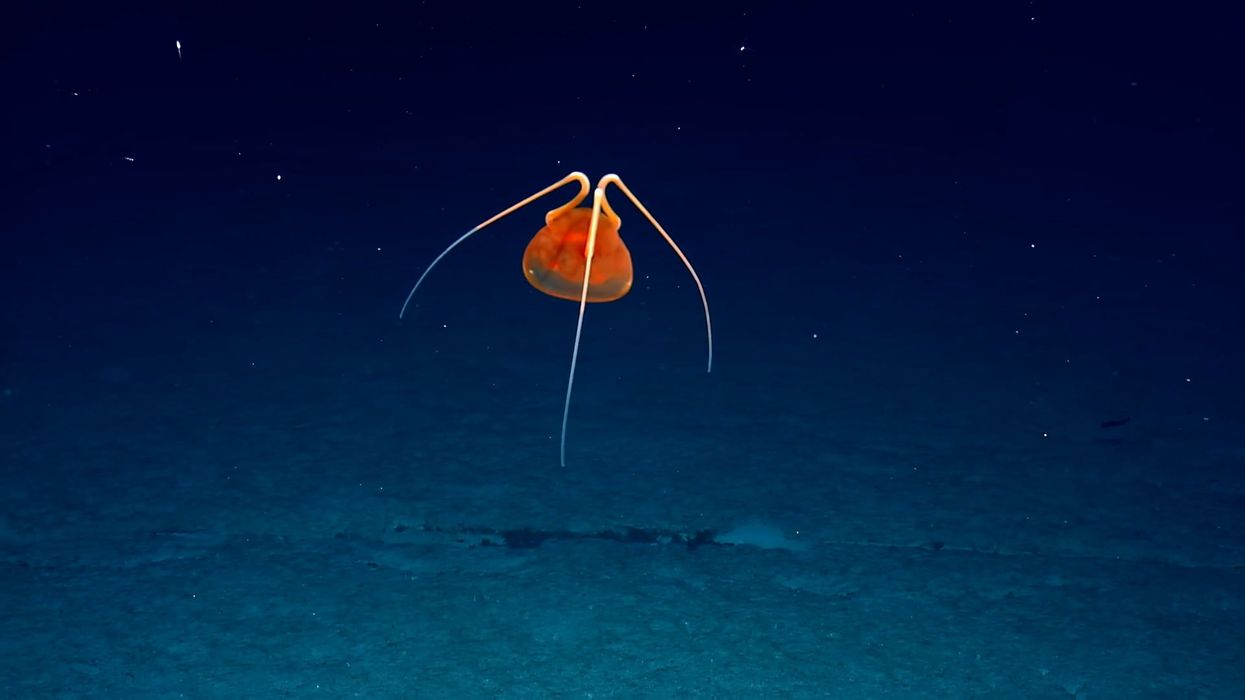Science & Tech
Greg Evans
Feb 02, 2024
Rare unnamed jellyfish seen only once before spotted in remote Pacific Ocean
EV Nautilus
If you ever fancied a bit of time alone and some solitude then head out to the South Pacific Ocean to a location known as Point Nemo, or the Oceanic Pole of Inaccessibility which is believed to be the most remote place on Earth.
The location, which is named after Jules Verne's Twenty Thousand Leagues Under the Sea, is believed to be so remote that if you were to venture there, then the nearest humans to you could very well be on the International Space Station.
The coordinates for the remote spot are coordinates 48°52.6′S 123°23.6′W. According to the Ocean Service the nearest landmasses to Point Nemo are: "Ducie Island, part of the Pitcairn Islands, to the north; Motu Nui, one of the Easter Islands, to the northeast; and Maher Island, part of Antarctica, to the south."
Therefore the nearest piece of land is 1,670miles away from Point Nemo but the International Space Station is 1,400miles away which is 270 miles closer than anywhere on Earth.
However, if you are looking to relocate there then it isn't the most ideal place to build a home and start a family. You see, Point Nemo has become known as a space cemetery where discarded pieces of shuttles, satellites and other materials are sent crashing back down to Earth and to the bottom of the ocean.
Holger Krag, Head of the Space Safety Programme Office at the European Space Agency said: “This is the largest ocean area without any islands. It is just the safest area where the long fall-out zone of debris after a re-entry fits into."
A total of 263 pieces of spacecraft once used by the United States, UK, Russia and Japan have all been sent to the location during the period between 1971 and 2018.
Amongst the pieces of space junk residing at the bottom of Point Nemo include Elon Musk and SpaceX's capsule rocket; the Dragon, and the famous Soviet Mir space station, which crashed in 2001.
The future of Point Nemo, although uninhabitable, does look optimistic, at least for those keen to preserve the spacecraft lying deep beneath it.
Due to the remote location, the waters at Point Nemo are virtually unexplored by humans and lack natural oxygen for most marine life. These conditions though do make it perfect for spacecraft to remain in almost pristine condition. According to The Sun, in 1000 years, scientists may be able to retrieve the materials at the bottom of the location and study for future generations to learn from.
Sign up for our free Indy100 weekly newsletter
Have your say in our news democracy. Click the upvote icon at the top of the page to help raise this article through the indy100 rankings.
Top 100
The Conversation (0)














